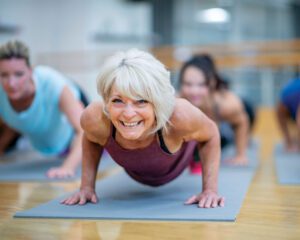

CHRONIC VENOUS INSUFFICIENCY
As many as 40 million people suffer from varicose veins or a more serious form of venous disease called chronic venous insufficiency (CVI), according to the Society for Vascular Surgery.
CVI is a progressive medical condition that worsens over time and affects the veins in the legs that carry blood back toward the heart. Common signs and symptoms of CVI include leg heaviness and fatigue, leg or ankle swelling, leg pain, aching or cramping, varicose veins, skin changes, ulcers, open wounds or sores, and restless legs.
There are many causes and contributing factors of venous insufficiency and venous disease. Family history, gender, age, sedentary lifestyle, trauma, prolonged standing or sitting, obesity or excess weight, current or previous pregnancies and smoking can all play a role.
There are built-in mechanisms in our legs that function to help return blood back to the heart via the veins. CVI develops when the veins in the legs can no longer pump blood back to the heart effectively. Usually, when the leg muscles contract, they squeeze the deep veins of the legs, facilitating circulation and the return of blood to the heart.
Exercise strengthens the calf muscles and helps to pump blood throughout both legs, promoting better circulation.
Techniques that improve and strengthen the calf and ankle pumps include compression therapy, exercise, hydrotherapy, and physical therapy.
Direct physical conditioning of the calf musculature with specific exercises is proven beneficial for patients with chronic venous insufficiency.
Exercise is considered the No. 1 healthy vein principle. However, certain exercises are proven to be better for vein health. As you exercise, blood is pumped from the veins in the arch of the foot toward the heart by the calf muscles. This process promotes healthy blood circulation and reduces vein disease.
Circulation is key. An active lifestyle is beneficial if it involves easy, fluid movements of the legs such as walking or swimming.
Simple leg and calf exercises that may be performed for additional benefit include bouncing your legs under your desk while seated and rotating your ankles and rocking your feet back and forth on the ground. In addition, wearing a good pair of compression socks or pantyhose will improve circulation back to the heart.
Varicose veins and venous insufficiency affect millions of people in the United States. To prevent or slow the progression of venous disease, exercise is one of the most important measures recommended by physicians across the nation.
But not all exercises are beneficial for optimal vein health. Walking, cycling, and swimming are most beneficial and may be performed at any age and mobility.
While exercising will not remove varicose veins and insufficiency, it can help to reduce the effects and symptoms. If you have symptoms of venous insufficiency and varicose veins, contact a vein specialist at Sarasota Vascular Specialists.
Sarasota Vein Center
941-371-6565
www.veinsandarteries.com
Sarasota
600 N. Cattlemen Road, Sarasota, Florida 34232
 Southwest Florida's Health and Wellness Magazine Health and Wellness Articles
Southwest Florida's Health and Wellness Magazine Health and Wellness Articles

